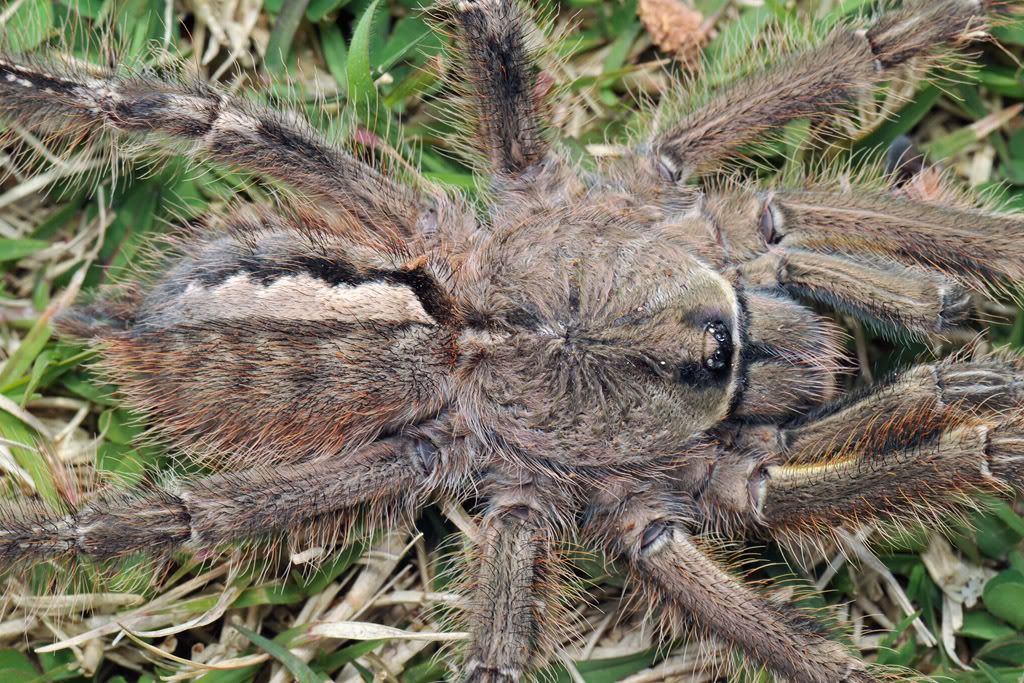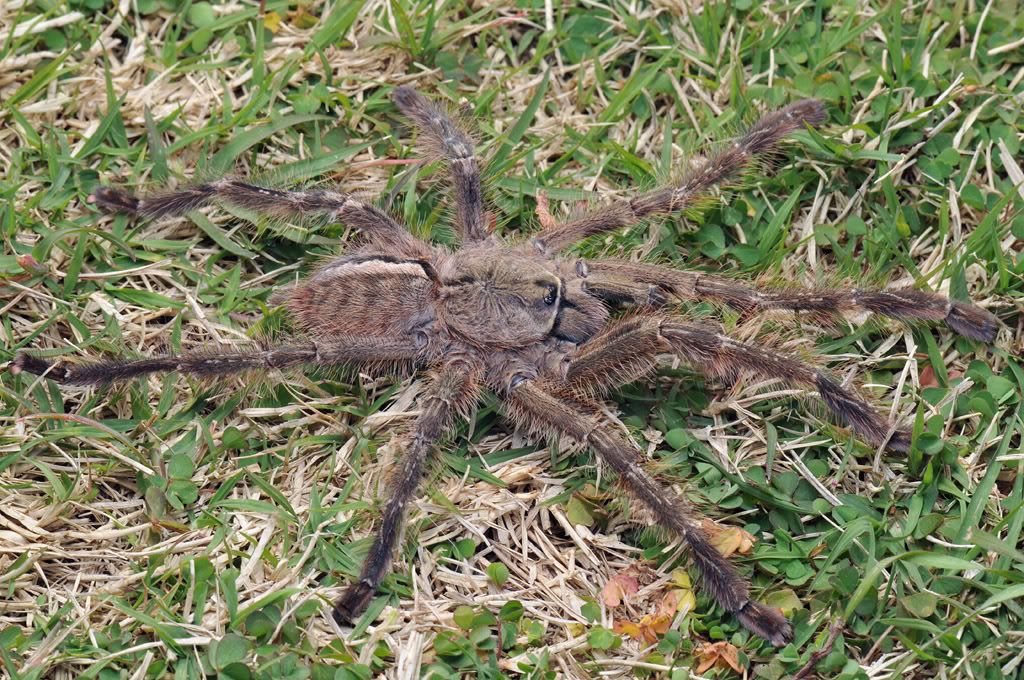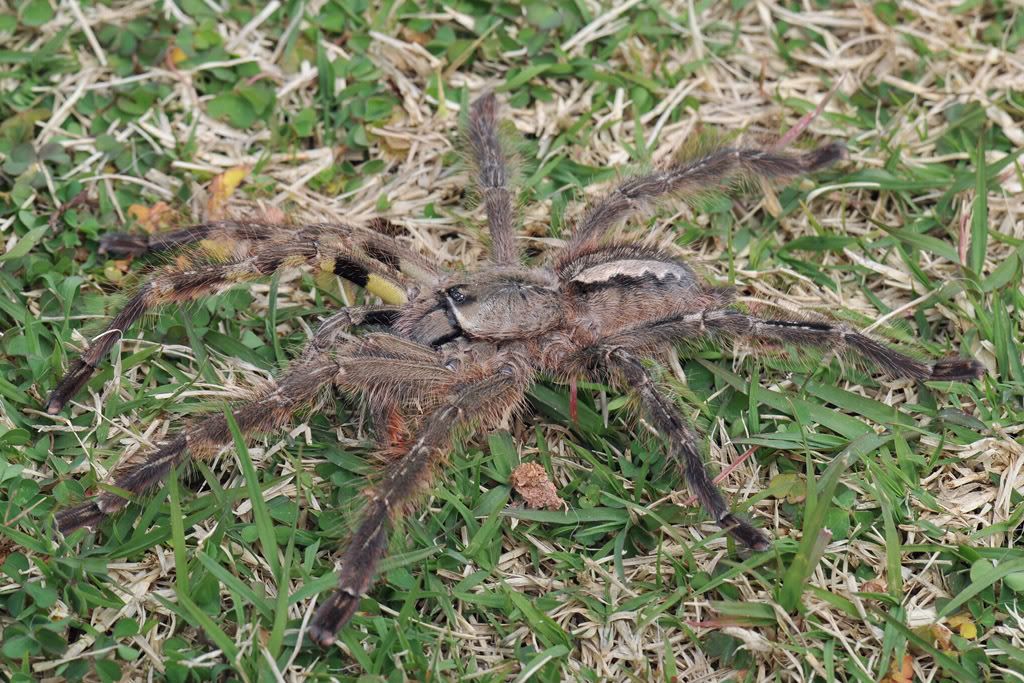- Joined
- Sep 27, 2003
- Messages
- 279
Poecilotheria ornata (gynandromorph)
Introduction:
The word gynandromorph comes from the greek: gyne means female, andros means male and morph means form. A gynandromorph is an animal that are divided half female and half male, they have organs of both sexes and offen haves characteristic of sexual dimorphism like colour/patterns-differences, and differences of antennas, wings, claws and horns. Gynandromorphs has nothing to do about hermafrodism - It´s an rare genetic abnormality that appears in insects, arachnids and crayfishes.
Earlier cases of gynandromorphs:
Often gynandromorphs cant function as females nor males, and cant reproduce. But there is a case of a lobster, where the female produced a half batch of eggs. The lobster lost the eggs but a group of scientist managed to save a few that later developed to fully functional animals.
More cases of gynandromorphs have been found in butterflies, jungle nymphs - Heteropteryx dilatata, leafs insects - Phyllium bioculatum, hissing cockroach - Gromphadorhina portentosa, beetles - Mecynorhina polyphemus confluens, grasshopper - Tropidacris collaris.
And now to the most interssting... Spiders!
It´s also had been found in wolfspider - Alopecosa pulverulenta. Two matings with one female has been noticed, it´s laying an eggsack, but unfortunately the eggs dosn´t develop.
Poecilotheria ornata - Gynandromorph
Could gynandromorphs occurs in Theraphosids? Yes, why not...
My friend that owns this odd specimen called me and explain that his Poecilotheria ornata really looks wierd. He explains that half of the spider has nomal pattens and colours, while the other half reduced/faded patterns and are brownish. This get me thinking of gynandromorphs I reading about earlier. My friend came to me with this specimen that I study and took some photos of.
That we all know it has turn up many coulourvariations latley, like coulor/patterns differences in aetae. But this specimen I saw was somthing more than usuals. According to me it´s no doubt that my friend has an Poecilotheria ornata gynandromorph in his collection!
Both dorsal and ventral side has characteristic of sexual dimorphism, You can read more about it at my website: Sexing guide - Guide for revealing the gender of poecilotheria spp.: http://www.zoonen.com/perzoonen/artikel.asp?oid=233789 I also checked the ventral side of the abdomen, and here the epigastric furrow was a little bit sloping and has different thickness. The female-sides furrow was more white and opened, while the male-sides furrow was smaller and closed. Unfortunately I dosn´t got any good pictures of this.
The genetical cause:
Here I won´t get further in to this... I have several papers about gynandromorph at home, but it´s to difficult and to messy to explain more about this. It´s describtions about genetic, cells, cromosomes, autosomes, etc. But papers explains all in smallest detail how gynandromorphs develops.
Left side - female, right side male.
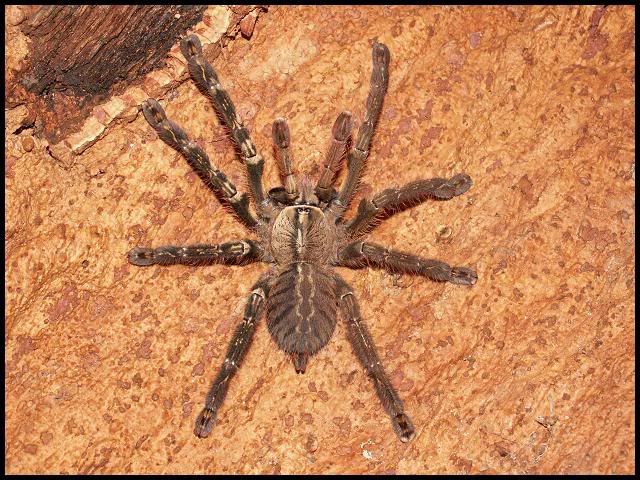
Here I took the upper picture and split the spider upp in half, copied and turn the respective sides reversed to show how clear and obvious the sexual dimorphism are in Poecilotheria ornata as the are well-known as.
Left side - female, right side male.
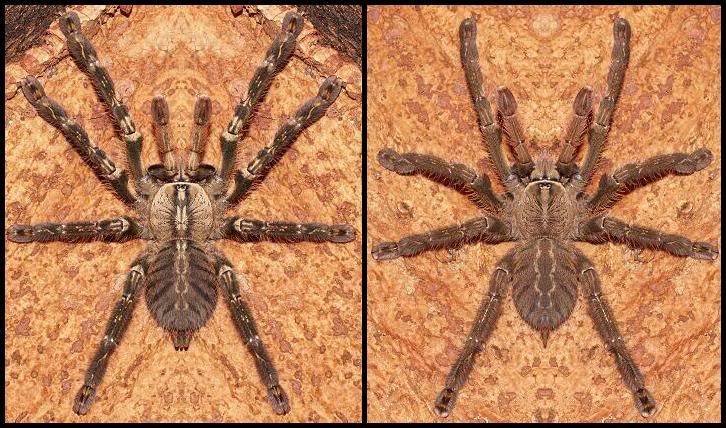
Upper part - female, lower part - male.
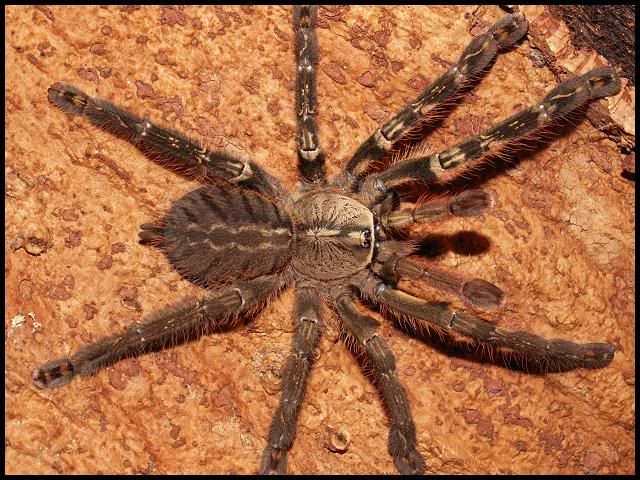
Lower part - female, Upper part - male.
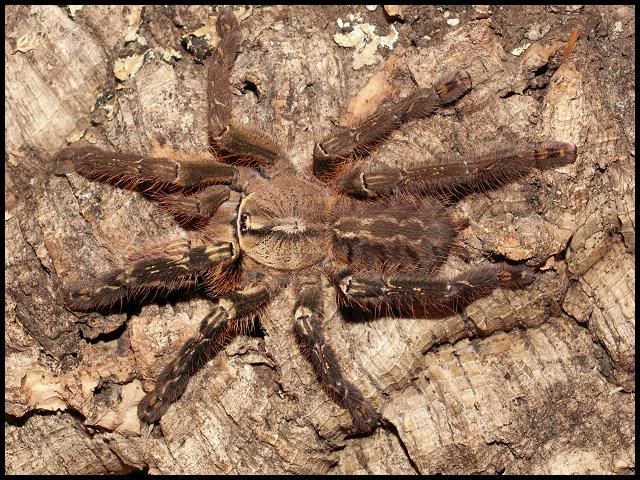
Left side - mela, right side - female.
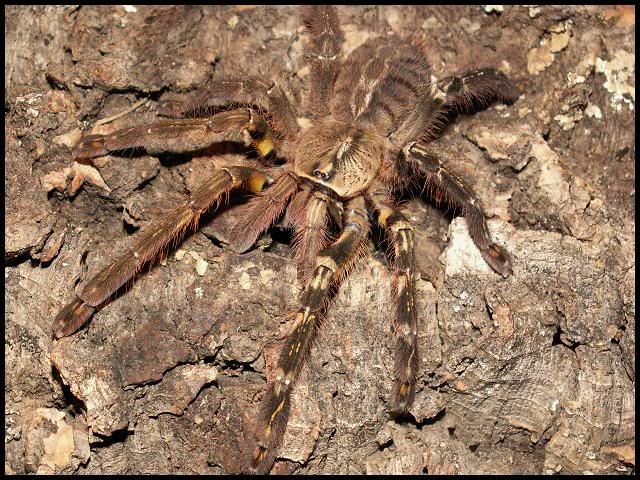
I will take more pictures of this specimen later when it´s mature and my friend will bring some of the exuvia to me soon.
Once agin, Sorry for my bad english!
Introduction:
The word gynandromorph comes from the greek: gyne means female, andros means male and morph means form. A gynandromorph is an animal that are divided half female and half male, they have organs of both sexes and offen haves characteristic of sexual dimorphism like colour/patterns-differences, and differences of antennas, wings, claws and horns. Gynandromorphs has nothing to do about hermafrodism - It´s an rare genetic abnormality that appears in insects, arachnids and crayfishes.
Earlier cases of gynandromorphs:
Often gynandromorphs cant function as females nor males, and cant reproduce. But there is a case of a lobster, where the female produced a half batch of eggs. The lobster lost the eggs but a group of scientist managed to save a few that later developed to fully functional animals.
More cases of gynandromorphs have been found in butterflies, jungle nymphs - Heteropteryx dilatata, leafs insects - Phyllium bioculatum, hissing cockroach - Gromphadorhina portentosa, beetles - Mecynorhina polyphemus confluens, grasshopper - Tropidacris collaris.
And now to the most interssting... Spiders!
It´s also had been found in wolfspider - Alopecosa pulverulenta. Two matings with one female has been noticed, it´s laying an eggsack, but unfortunately the eggs dosn´t develop.
Poecilotheria ornata - Gynandromorph
Could gynandromorphs occurs in Theraphosids? Yes, why not...
My friend that owns this odd specimen called me and explain that his Poecilotheria ornata really looks wierd. He explains that half of the spider has nomal pattens and colours, while the other half reduced/faded patterns and are brownish. This get me thinking of gynandromorphs I reading about earlier. My friend came to me with this specimen that I study and took some photos of.
That we all know it has turn up many coulourvariations latley, like coulor/patterns differences in aetae. But this specimen I saw was somthing more than usuals. According to me it´s no doubt that my friend has an Poecilotheria ornata gynandromorph in his collection!
Both dorsal and ventral side has characteristic of sexual dimorphism, You can read more about it at my website: Sexing guide - Guide for revealing the gender of poecilotheria spp.: http://www.zoonen.com/perzoonen/artikel.asp?oid=233789 I also checked the ventral side of the abdomen, and here the epigastric furrow was a little bit sloping and has different thickness. The female-sides furrow was more white and opened, while the male-sides furrow was smaller and closed. Unfortunately I dosn´t got any good pictures of this.
The genetical cause:
Here I won´t get further in to this... I have several papers about gynandromorph at home, but it´s to difficult and to messy to explain more about this. It´s describtions about genetic, cells, cromosomes, autosomes, etc. But papers explains all in smallest detail how gynandromorphs develops.
Left side - female, right side male.

Here I took the upper picture and split the spider upp in half, copied and turn the respective sides reversed to show how clear and obvious the sexual dimorphism are in Poecilotheria ornata as the are well-known as.
Left side - female, right side male.

Upper part - female, lower part - male.

Lower part - female, Upper part - male.

Left side - mela, right side - female.

I will take more pictures of this specimen later when it´s mature and my friend will bring some of the exuvia to me soon.
Once agin, Sorry for my bad english!
Last edited:

